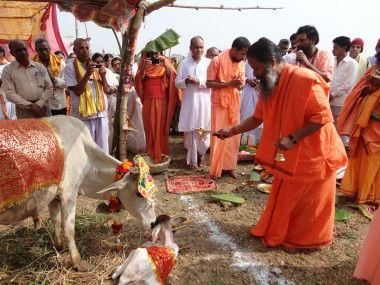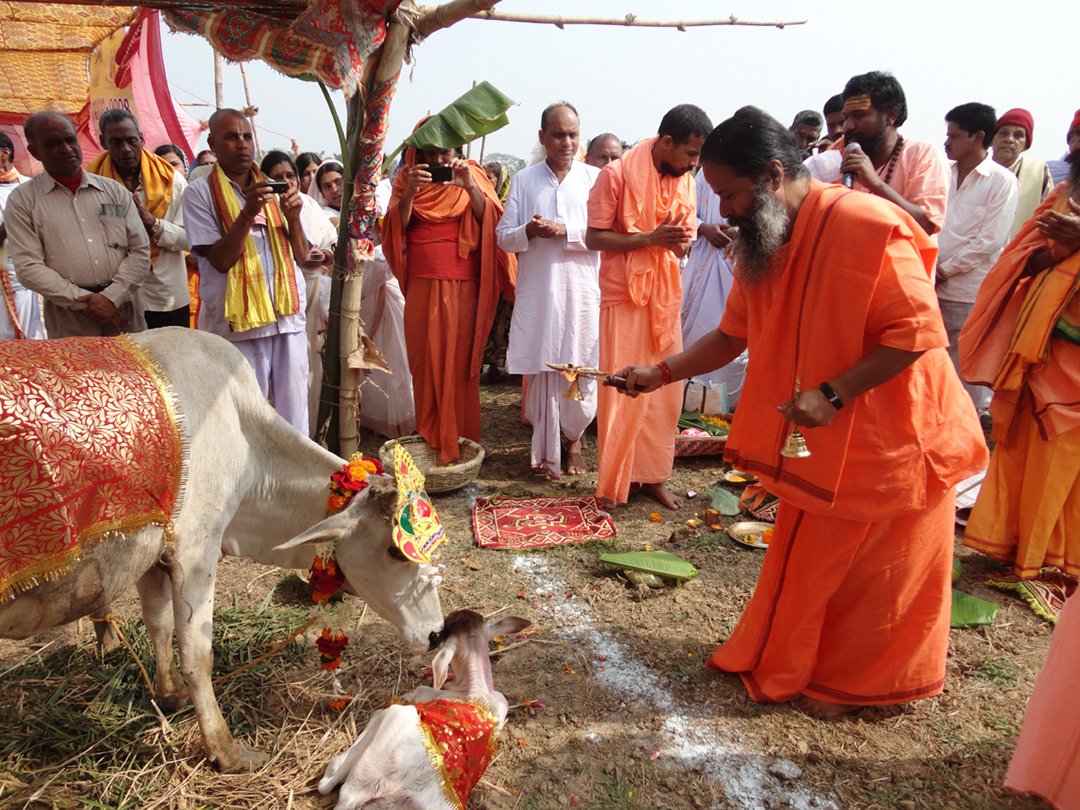Articles features
Odisha monk campaigns to save indigenous cow

Puri (Odisha), March 25
A monk in Odisha has launched a campaign to save the state's native cow breeds that are on the brink of extinction.
Paramahamsa
Prajnanananda, the spiritual leader of the Kriya Yoga of Prajnana
Mission, has kept over 150 cows of Odisha's indigenous varieties at his
ashrams and urges others, especially farmers, to follow suit.
Prajnanananda, 55, said he stayed three years ago in Rajasthan where such conservation had proved successful.
After returning to Odisha, he started collecting native varieties cows and nurturing them.
"Initially
we started with a few. Later the number gradually increased," said the
saffron-robed who has travelled widely around the world to promote Kriya
Yoga -- a spiritual form of yoga.
"The milk we consume today
from hybrid cow is type A1 which can contribute to diseases. But the
milk of the native cow is type A2 which is good for health,"
Prajnanananda told IANS, seated in Hariharananda Gurukulam, an ashram
near Puri city.
Situated in the natural surrounding of forests,
about 60 km from Bhubaneswar, the ashram houses over 50 cows and calves,
mostly of Odisha's indigenous varieties as well as over 200 stray
cattle.
The milk produced by the cows cater to the daily needs of hundreds of ashram inmates and regular visitors.
The
Hariharananda Balashram, the Prajnana Mission's another religious
centre in Kendrapada district, his birthplace, also houses about 85 cows
and calves.
Spread over about 10 acres, the ashram also runs a
residential school which has 500 children, mostly orphans. They get
quality education free of charge up to Class 10.
The students, staff and other inmates consume milk produced by the ashram cows.
The
holy man, who has written and translated numerous books on spiritual
topics, said the forested areas in the ashram complex provide the
domestic animals the natural grazing fields.
He said efforts were under way to collect more such cows.
"From
time immemorial the cow has been the backbone of our agrarian economy,"
he told IANS. "The milk, curd, ghee, cow dung and cow urine of the
native cows have medicinal properties."
He lamented that their use has been almost lost.
Prajnanananda
has been organising meetings across the state in recent years,
motivating farmers to go for and protect the indigenous cow. "Many of
them have started preserving the native varieties," he said.
"We plan to set up six 'goshala' (cow shelters) in Odisha to preserve the native cows and bulls," he said.
The
native cow's population in Odisha was 13,144,359 in 2003. This fell to
10,315,499 according to the livestock census of 2012, the most recent.
Although
the state has several native cow breeds, only four have been listed in
the National Registry by the National Bureau of Animal Genetic Resource
(NBAGR).
Prajnanananda, who was an economics professor at the
Ravenshaw College in Cuttack before becoming a monk in 1995, said most
native cows have evolved naturally through adaptation to Odisha's
agro-ecological conditions.
They derive their names from the place of their origin or on the basis of prominent characteristics.
One species seen in Malkangiri district stands less than one metre tall -- and is not found anywhere else in the world.
Another species seen in Jajpur district gives high yield and has greater immunity to a host of livestock diseases.








































